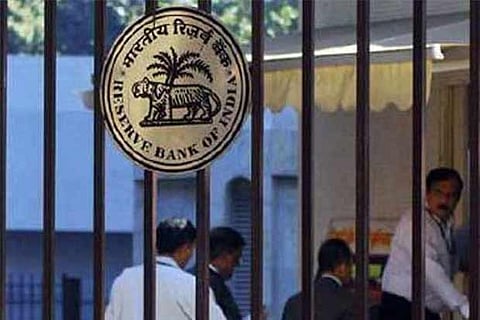

Mumbai
RBI in a statement said banks could 'carve out' up to 15 per cent of holdings under the statutory liquidity reserves to meet their liquidity coverage ratio (LCR) requirements as compared to 13 per cent now.
This resulted from a rise in the facility to avail funds for LCR to 13 per cent from 11 per cent, effective October 1, RBI said in a statement.
The move by the central bank follows concerns over tight liquidity conditions and banks' unwillingness to lend to NBFCs.
RBI said it "stands ready to meet the durable liquidity requirements of the system through various available instruments depending on its dynamic assessment of the evolving liquidity and market conditions."
Citing proactive steps taken in the last few days, RBI said it conducted open market operation (OMO) on September 19 and provided a liberal infusion of liquidity through term repos in addition to the usual provision via the liquidity adjustment facility (LAF).
In a bid to further infuse liquidity in the system, the RBI Thursday conducted Rs 10,000 crore OMO.
As of September 26, banks had availed of Rs 1.88 lakh crore through term repos from the Reserve Bank, the apex bank said in a statement.
"As a result of these steps, the system liquidity is in ample surplus," it said.
RBI further announced the relaxation in statutory liquidity ratio (SLR) requirement with effect from October 1, 2018.
The liquidity coverage ratio (LCR) refers to highly liquid assets held by financial institutions to meet short-term obligations while Statutory Liquidity Ratio (SLR) is the portion of deposits that banks have to invest in government bonds.
"This should supplement the ability of individual banks to avail of liquidity, if required, from the repo markets against high-quality collateral. This, in turn, will help improve the distribution of liquidity in the financial system as a whole," it said.
Concerns of liquidity crunch were triggered following defaults by an IL&FS group company. It spread to non-banking financial companies (NBFCs), which in turn roiled financial markets.
IL&FS Financial Services, a group company of IL&FS, defaulted on one of its commercial paper issuances due for repayment on Monday. This was the third default by the company.
Visit news.dtnext.in to explore our interactive epaper!
Download the DT Next app for more exciting features!
Click here for iOS
Click here for Android